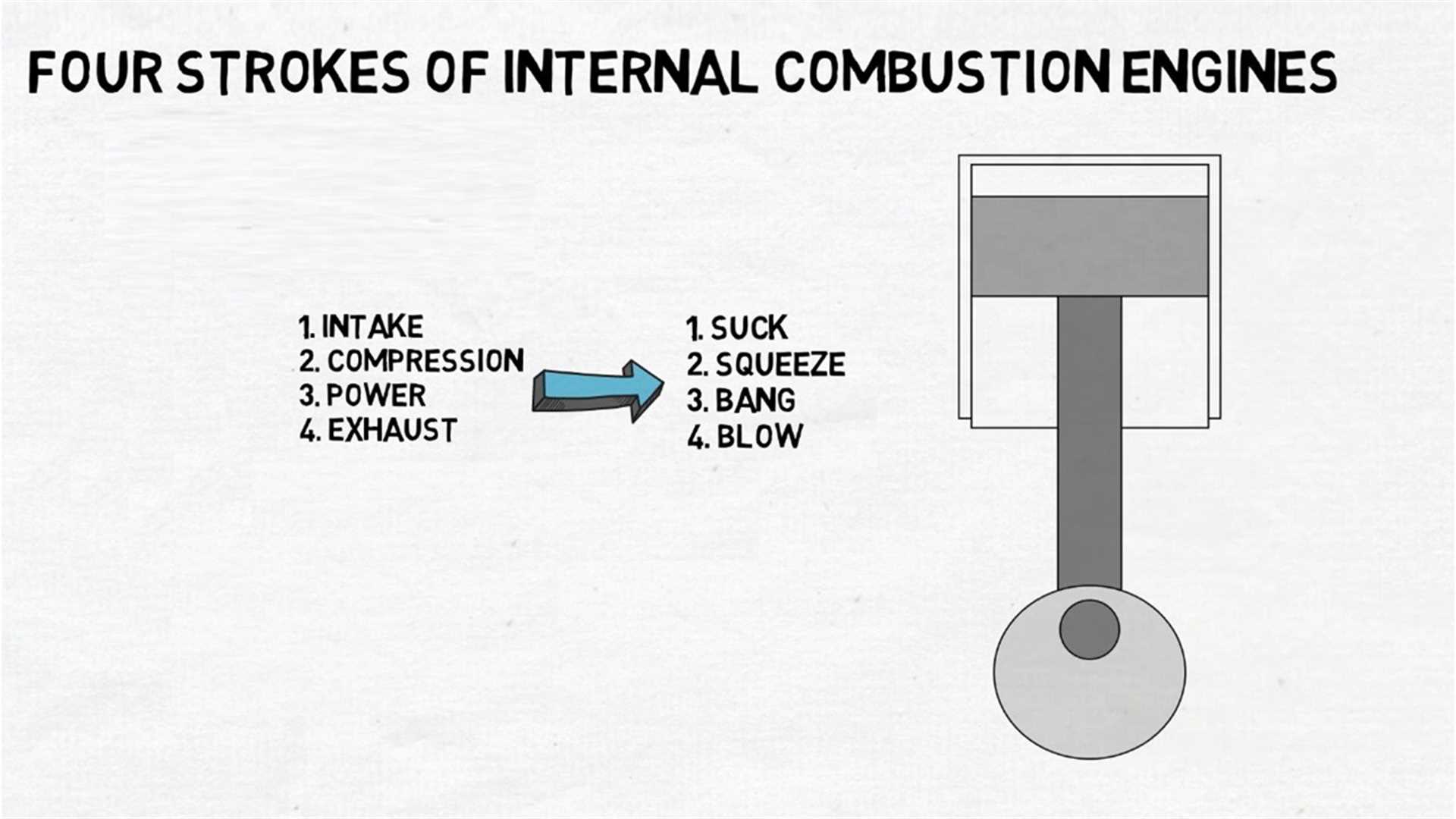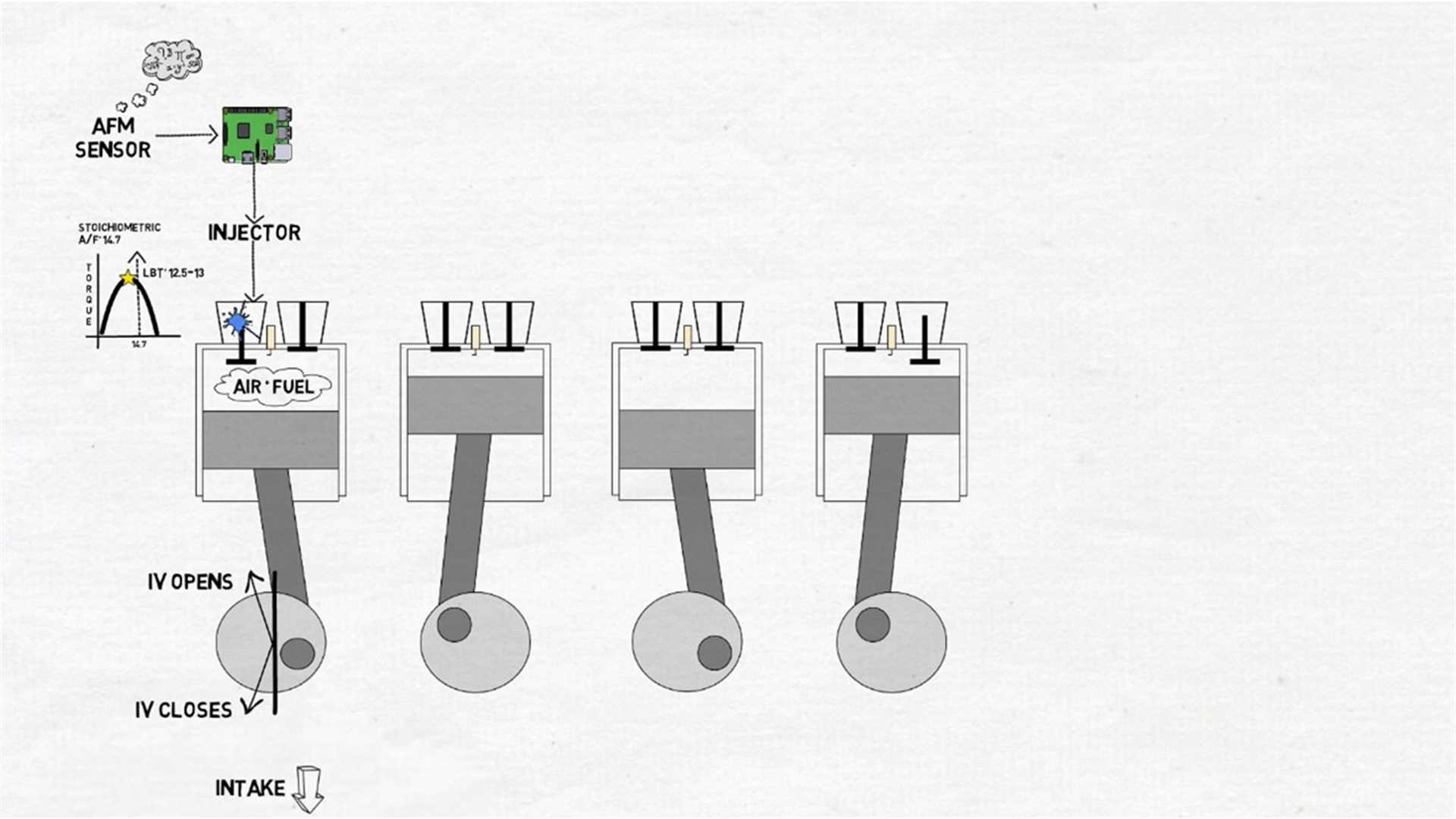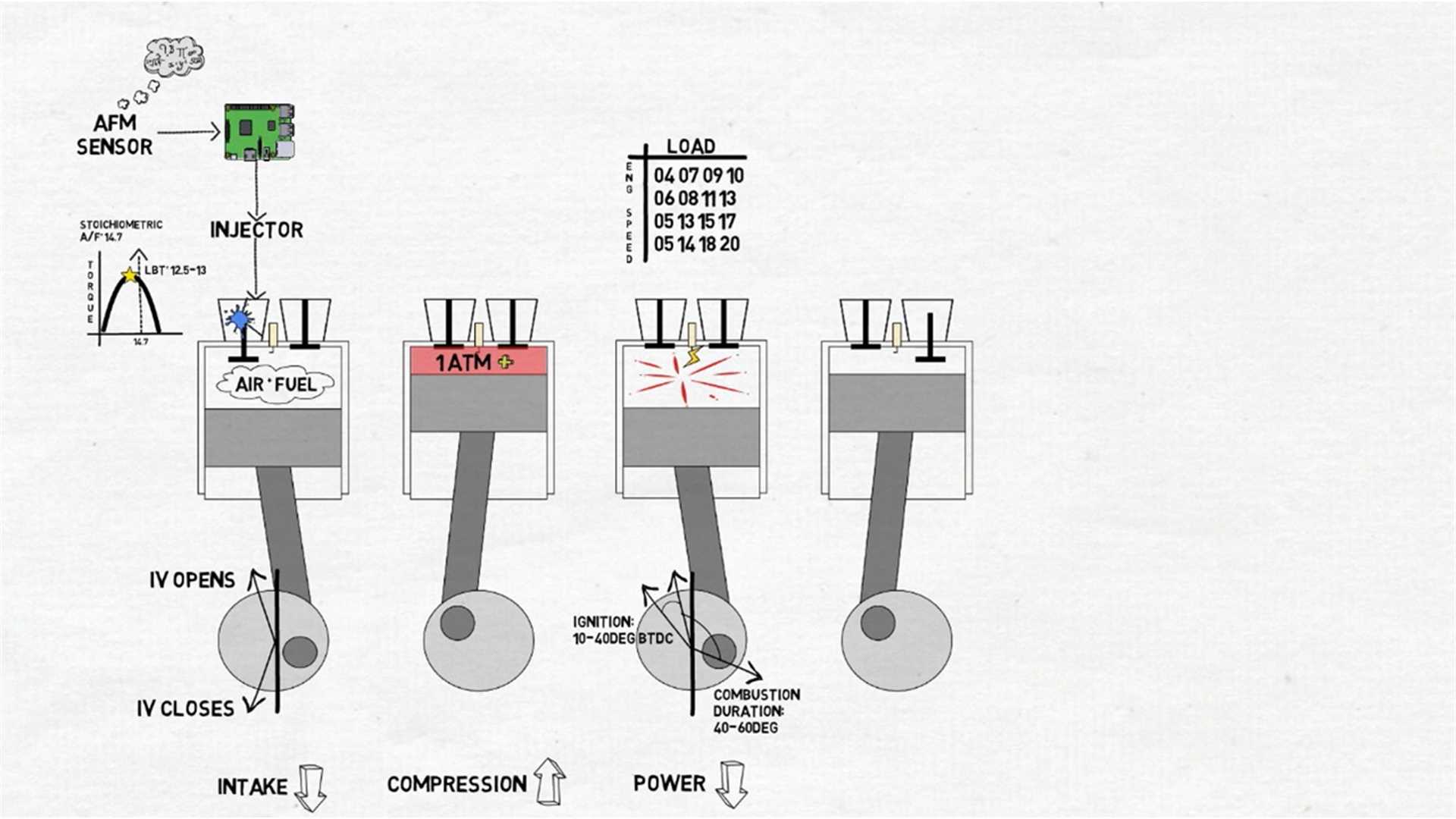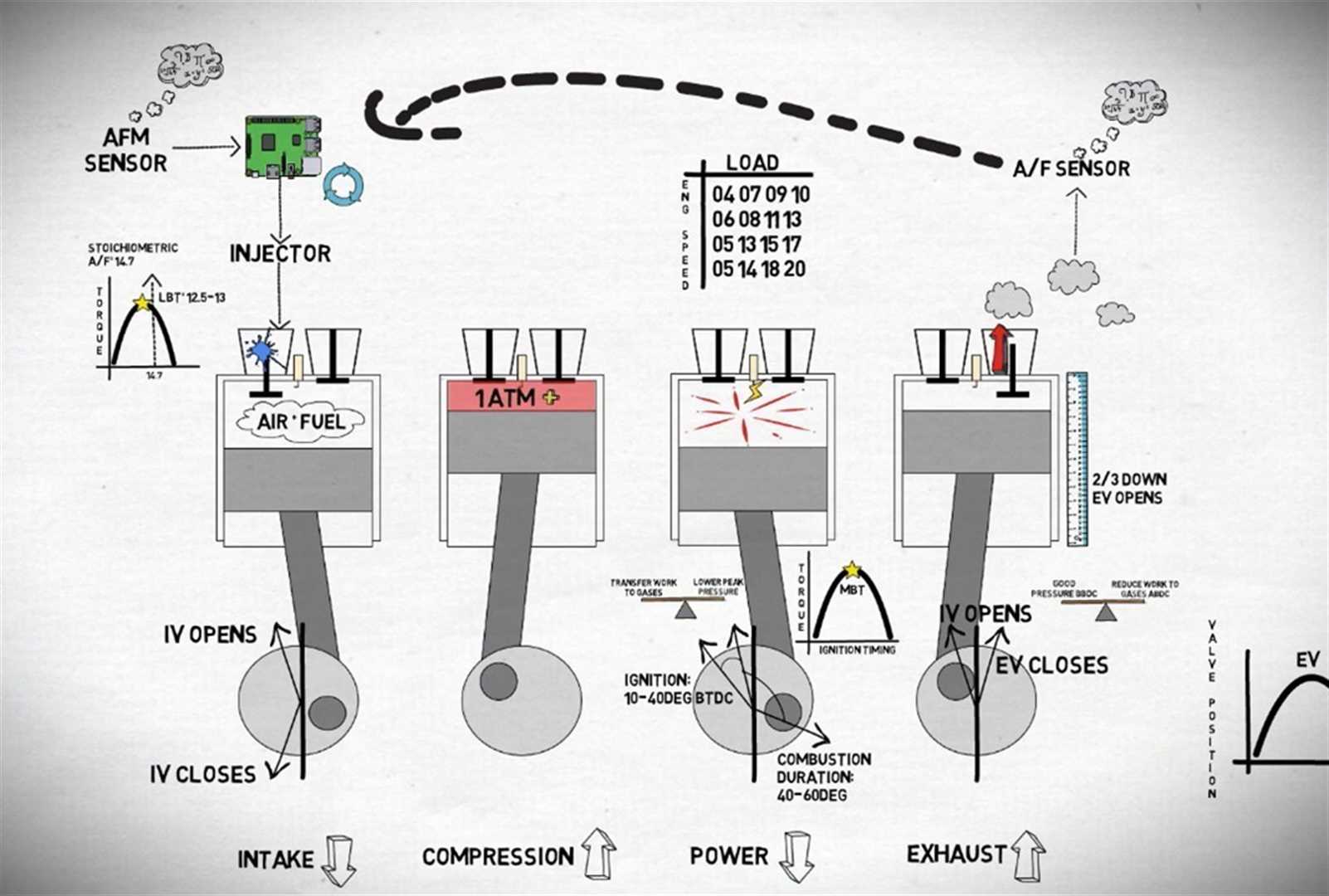Working Principle and Optimization Methods of Four-Stroke Engines
The four-stroke engine is widely used in modern cars, trucks, and various types of industrial internal combustion equipment. Mastering the working principle of the four-stroke cycle helps optimize each stroke, improving engine efficiency and power output. The four main strokes include: intake, compression, combustion/power, and exhaust. This process converts chemical energy into kinetic energy, with each stroke playing a specific role and significantly influencing power output.
During the combustion/power stroke, the spark plug ignites the air-fuel mixture, releasing chemical energy, which is converted into thermal energy, causing the gas inside the cylinder to expand violently. This expansion drives the piston downward, transferring kinetic energy to the crankshaft via the connecting rod, ultimately driving the vehicle’s power output.
In this section, you will explore the key components of each stroke and learn how to enhance performance through fine-tuning. Additionally, extended reading on ECU, TCU, and CPC is provided at the end to give you a comprehensive understanding of these control modules' critical roles in engine management.
1. Intake Stroke
Process: The piston moves downward, the intake valve opens, and the air-fuel mixture enters the cylinder.
Adjustable Aspects:
-
Use high-flow air filters, upgrade the intake system, and optimize the intake manifold: These modifications improve the efficiency of airflow into the cylinder, allowing more air to enter, thus enhancing combustion efficiency.
-
Adjust Variable Valve Timing (VVT): Optimizing the timing of intake valve opening and closing improves the engine’s breathing efficiency and power output.
-
Lower intake air temperature: Every 10°C drop in air temperature can increase air density by about 1-2%. This can be achieved through intake atomization spray or intercoolers to increase air density, thereby improving combustion efficiency.
-
Add combustion aids: Introducing specific combustion aids (e.g., methanol or ethanol spray) into the intake can enhance combustion stability and energy output.
Effect on Kinetic Energy: Increasing the amount of air entering the cylinder and lowering air temperature raises the density of the mixture, enabling more complete combustion and higher kinetic energy production.
Non-Adjustable Aspects: The piston stroke and cylinder volume are fixed, so some opt to bore the cylinder to increase displacement and boost engine power output.
> Read more : How to Improve the Efficiency of the Intake Stroke
2. Compression Stroke
Process: The piston moves upward, compressing the mixture, with both the intake and exhaust valves closed.
Adjustable Aspects:
-
Adjust ignition timing: Igniting the mixture at the optimal moment maximizes combustion efficiency.
-
Use high-octane fuel: Reduces knocking and ensures stable compression; alternatively, use turbocharging to increase cylinder pressure, boosting combustion energy.
-
ECU control: The Electronic Control Unit (ECU) regulates ignition timing and injector control, optimizing fuel injection between the intake and compression strokes.
-
Upgrade injector pressure and injectors: When intake pressure increases (e.g., with turbocharging), fuel injection pressure must also increase to ensure proper atomization and uniform mixing with air.
Effect on Kinetic Energy: Raising the compression ratio (increasing cylinder pressure) concentrates chemical energy release, producing more heat and kinetic energy.
Non-Adjustable Aspects: The physical structure of the piston and cylinder limits the maximum achievable compression ratio.
> Read more : How to Improve the Efficiency of the Compression Stroke
3. Power Stroke
Process: The spark plug ignites the compressed mixture at the end of the compression stroke, driving the piston downward.
Adjustable Aspects:
-
Adjust ignition timing: Ensures the mixture ignites at the proper point, maximizing combustion pressure and driving the piston downward effectively.
-
Optimize combustion chamber and select suitable spark plugs: Improving the chamber shape and using high-efficiency spark plugs enhance combustion, making it more even and complete.
-
Use multi-point or direct injection technology: These methods create a more uniform air-fuel mixture, improving combustion and boosting power output.
Effect on Kinetic Energy: The speed and efficiency of combustion determine the peak pressure and duration inside the cylinder, directly affecting the piston’s kinetic energy output.
Non-Adjustable Aspects: The Carnot cycle imposes limits on thermodynamic efficiency, restricting the conversion of chemical energy into kinetic energy.
> Read more : How to Improve the Efficiency of the Power Stroke
4. Exhaust Stroke
Process: The piston moves upward, the exhaust valve opens, and the exhaust gases are expelled.
Adjustable Aspects:
-
Install high-performance exhaust systems and adjust exhaust valve timing: Reducing back pressure and optimizing exhaust valve timing and angle can improve exhaust efficiency.
-
Install Mach5 Performance headers: These headers are designed for high flow, reducing exhaust resistance, expelling exhaust gases more efficiently, and lowering back pressure. This improves power output and engine responsiveness, while also enhancing the exhaust sound, making it sportier.
Effect on Kinetic Energy: Lowering back pressure enables the engine to expel exhaust gases more efficiently, reducing resistance for the next intake stroke and improving overall power output.
Non-Adjustable Aspects: The length of the exhaust stroke and piston movement are constrained by the physical structure of the engine.
> Read more : How to Improve the Efficiency of the Exhaust Stroke
Summary
Optimizing engine power output relies on mastering and controlling four essential processes. The ultimate goal is to maximize the conversion of chemical energy into kinetic energy.
- Improve Fuel Quality: Using high-octane fuel provides higher combustion energy and ensures more stable combustion.
- Increase Air Density: Turbocharging or supercharging increases the amount of air entering the cylinder, boosting oxygen levels during combustion and improving efficiency.
- Optimize the Air-Fuel Mixture: Precise control of fuel injection quantity and timing ensures the ideal air-fuel ratio (typically 14.7:1), maximizing combustion efficiency.
- Use Additives: Specific fuel additives can enhance the release of chemical energy, increase power output, and reduce carbon buildup.
Additionally, to achieve a deeper understanding of engine operation and performance optimization, it’s crucial to explore how the ECU interacts with each stroke in the four-stroke cycle:
- Intake to Suck: Draws air and fuel into the cylinder as the intake valve opens, creating a vacuum.
- Compression to Squeeze: Compresses the air-fuel mixture as the piston moves upward.
- Power to Bang: Ignites the compressed mixture to generate power, pushing the piston down.
- Exhaust to Blow: Expels the exhaust gases as the piston moves upward again and the exhaust valve opens.
Modern vehicles further enhance performance through turbochargers that intervene at different stages of these processes, providing significant tuning potential. If you're interested in detailed tuning techniques and learning how ECU adjustments, such as misfire tuning or generating backfire explosions, can enhance the engine’s sound and performance, explore the role of ECU interventions in the four-stroke cycle.
Recommended Reading and Internal Links
- Working Principle and Optimization Methods of Four-Stroke Engines
- How to Improve the Efficiency of the Intake Stroke
- How to Improve the Efficiency of the Compression Stroke
- How to Improve the Efficiency of the Power Stroke
- How to Improve the Efficiency of the Exhaust Stroke
- The ECU Tuning Parameters You Need to Know
- What is the CPC Module: Its Origins and Functions
- Core Functions and Limitations of the CPC Module
- How CPC Limits ECU and TCU Power Adjustments.
- A Pioneer in Exhaust System Insulation & Performance Optimization of Mach5 Performance
- Comparison Mach5 Performance Ceramic Insulation Solution & Non-Insulated Systems
Comprehensive Thermal Management Solutions for Mach5 Performance Exhaust Systems
All Mach5 Performance exhaust systems—primarily downpipes and mid-pipes—are designed with a complete thermal management solution unless otherwise specified:
-
Ceramic insulation wraps and heat shields for effective heat control
-
F1-inspired technology to improve durability and power output
-
3D reverse engineering to ensure precise installation and performance optimization
Visit:Mach5 Performance Online Store
Explore more about ceramic insulation blankets and other high-performance exhaust insulation materials by visiting the Mach5 Performance Online Store, or consult our professional advisors to find the best insulation solution for your vehicle.






